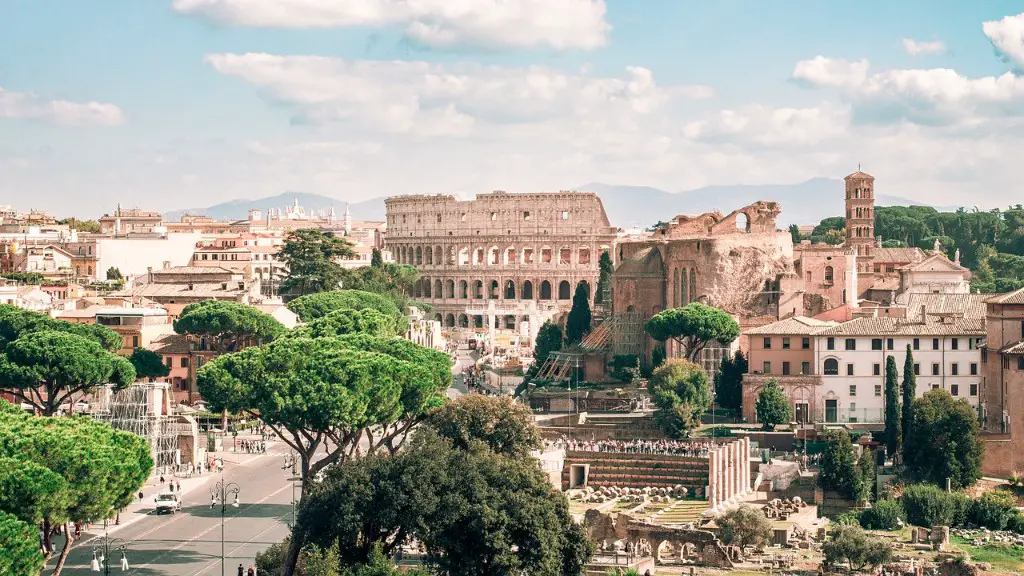Ancient Roman Slavery
The Roman Empire was built on slavery, an ancient form of exploitation where a person’s freedom was exchanged for manual labor. Ancient Rome was a heavily stratified society, with slaves at the bottom of the hierarchy. Slaves were the backbone of Rome’s economy, performing all sorts of roles, from the mundane to the specialized. Their contribution was fundamental in developing and sustaining the society.
Historical evidence suggests that slave labor was employed in almost every field of human endeavour, from the most menial jobs, such as farm work, manual labour and domestic help, to specialized trade and craftsmanship. Slaves worked in mines, quarries, on the state-funded public works and on infrastructure and defense projects. Slaves were used in the Roman households, to perform everyday chores, to help with carrying out administrative work, to work on artistic projects, and even for teaching the children.
In ancient Rome, slavery was an accepted reality and there were a large number of slaves, who were mostly acquired through war and conquest, or through trade within the empire as well as with foreign countries. Most slaves were either sold into slavery or inherited by their owners. Slaves were also condemned criminals or had been bought.
Slaves had virtually no rights and were treated as property, often subject to cruel and harsh punishments. They were not allowed to vote and were forbidden from most public ceremonies. Although some slaves were able to buy their freedom, slavery was not abolished until A.D. 854.
Slaves were responsible for all the menial and backbreaking work, with their work schedules strictly regulated and often filled with long hours of labor. Farm and agricultural labor was the most widespread form of slave labor in Ancient Rome. Slaves had no input or decisions in what they were asked to do, and they had no control over their lives.
In addition to agricultural labor, there were also highly-skilled slaves who worked as artisans, musicians, architects, and engineers. Historians have also found evidence of doctors, lawyers and teachers who were slaves. These slaves were highly valued, and their owners tried to create a beneficial atmosphere for their highly skilled slaves and expected them to excel in their area of specialization.
Slave Markets
Slave trading was conducted in public markets scattered throughout the empire – Rome, Capua and Ostia being among the most prominent. Here, slaves would be offered for sale, auctioned off to the highest bidder. Women, in particular, were highly sought after, as they were expected to perform domestic chores and serve as servants.
Visitors to the market were able to inspect the merchandise; they would raise the slave’s clothes to check for bruises or tattoos, inspect the teeth, shape of the head and other physical characteristics, like strength. Cuts and scars were sometimes concealed with paint or dye. Slaves were usually pre-priced, and the buyer had to pay the full amount without negotiation.
In some cases, slaves were also rented out, which was a more cost-effective alternative to buying when the duration of the work was short. After being rented out, slaves could be purchased and returned to the same owner or resold. Slaves could also be traded for other goods, such as food, jewelry or even services.
Achievements of Slaves
Despite the harsh treatment, some slaves were able to rise above their station and make significant contributions to society in fields such as arts and sciences.
One of the most famous slaves of ancient Rome was Aesop, a Greek philosopher renowned for Aesop’s Fables. He was said to have been a slave owned by the statesman Iadmon of Samos, but eventually gained his freedom.
Perhaps the most famous example is that of Terence, a slave who wrote some of the best comedies of his time. He was a slave of Publius Terentius Afer, a senator and a wealthy Roman. After a number of years as a slave, Terentius was eventually freed and acknowledged by his former master.
Apollonius, a renowned Greek mathematician and philosopher, was also a slave at one point in his life. He was owned by a nobleman, who eventually freed him and recognized him for his achievements.
Legacy
The legacy of slavery in the Roman empire is still seen in many ways today. From their language, culture and art to their engineering and constructions, Roman slaves played an important role in shaping the world.
The practice of slavery, although no longer prevalent, still continues to play a role in our society today. In some cases, now as then, people still find themselves trapped in oppressive economic systems and are forced to work for exploitative wages.
It is important to recognize the impact slavery has had in our past, and its consequences that continue to present challenges to our society in the present.
Escaping Slavery
In ancient Rome, some slaves were able to escape their confines and obtain their freedom. There were some legal routes they could take but, more often than not, they had to resort to more clandestine methods.
Some slaves were able to flee or escape with the help of sympathetic friends or family. Others were able to purchase their freedom, with help from friendly business owners, who would provide them with the required funds, and then deduct their payment from the wages the slaves earned.
Still others took the riskier path of revolt. In some cases, slaves rose up against their masters and even managed to establish their own communities, such as the ‘fugitive slave villages’ that sprung up in parts of Italy during the Republic.
Impact on Society
The practice of slavery affected every part of society in ancient Rome. Slaves were part of the fabric of the society, and their labor underpinned the economy, providing much-needed labor for farms and businesses.
The system of slavery also had a significant impact on the culture of ancient Rome. Slaves were often seen as sub-human, and it was commonly accepted that they should be treated as such. This cultural attitude was extended to other conquered people, such as Jews and other minorities, who, although not technically slaves, were still regarded as inferior by society.
The legacy of slavery in Rome persists today, with certain legacy effects still being felt, from the language and culture to the political, economic, and social structures. It serves as a reminder of a society that embraced and exploited slavery as part of its way of life.





